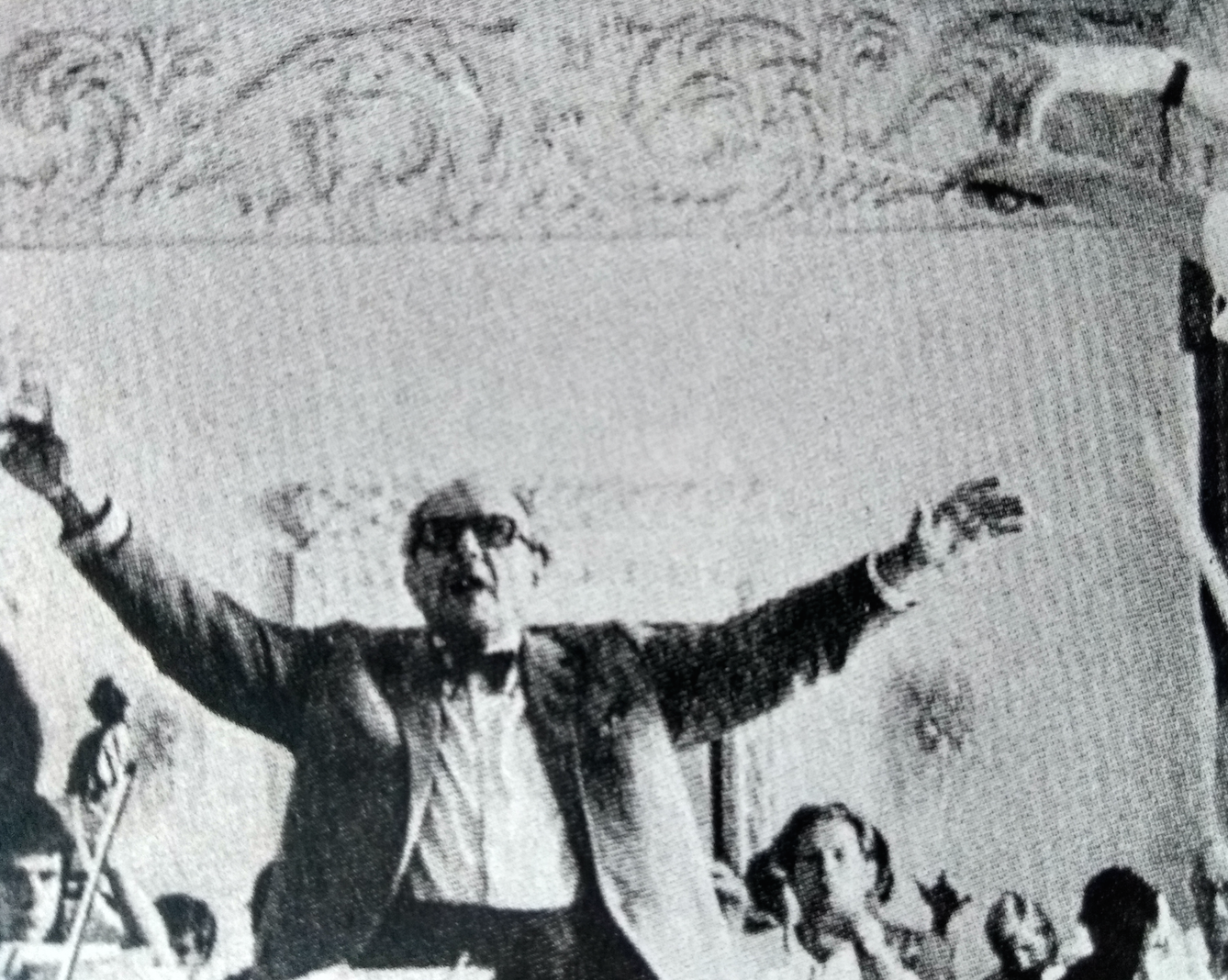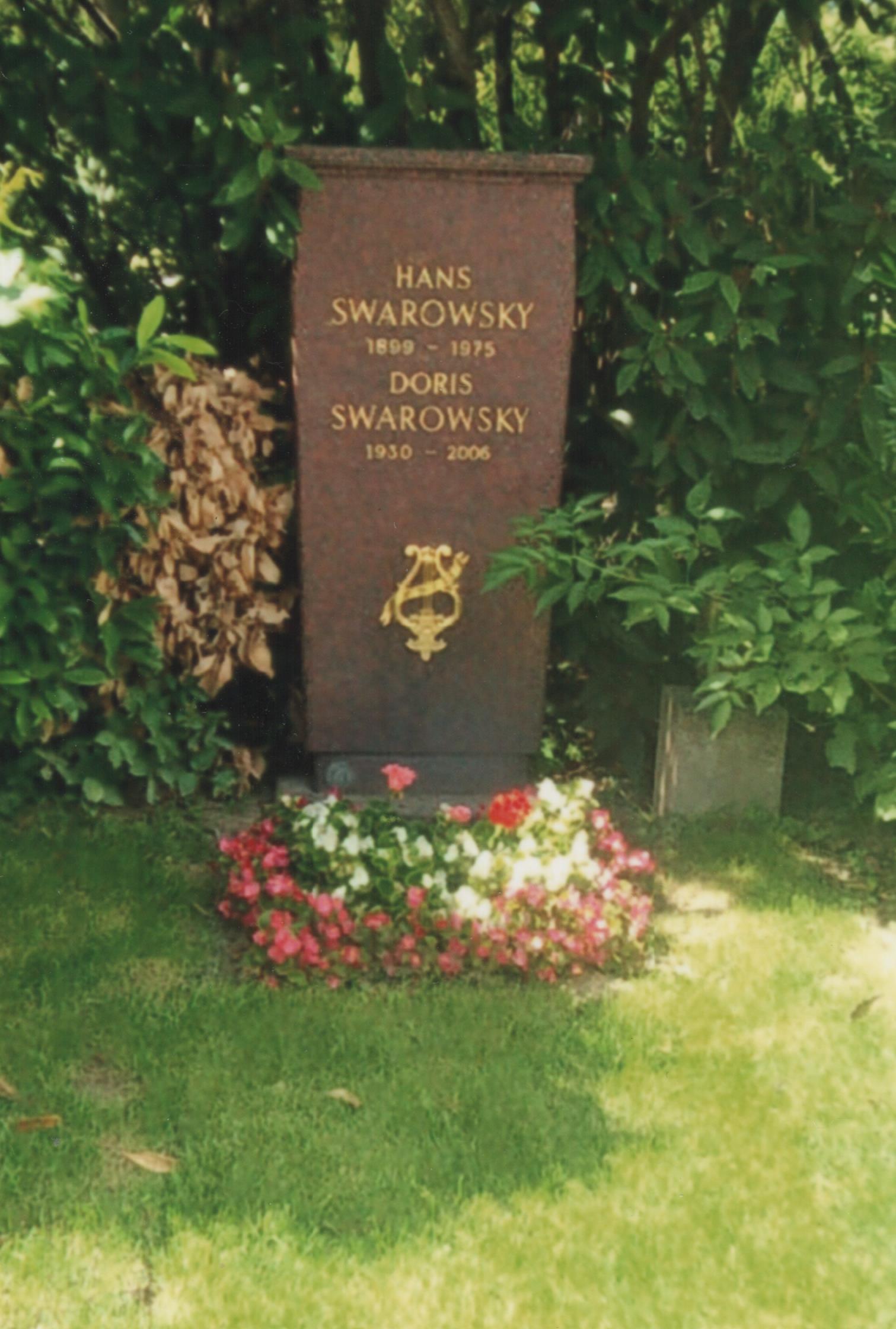1. Early Life and Education
Hans Swarowsky's formative years were marked by a pivotal early musical experience and a comprehensive academic and artistic training that laid the groundwork for his distinguished career.
1.1. Birth and Background
Hans Swarowsky was born on September 16, 1899, in Budapest, Hungary. A notable early musical experience in his life was his participation as a choir member in the 1910 premiere of Gustav Mahler's epic Symphony No. 8 (also known as the "Symphony of a Thousand").
1.2. Formal Education and Musical Training
Swarowsky pursued a broad academic path, studying psychology and history at the University of Vienna. Concurrently, he received extensive musical training. He studied the art of conducting under two of the most eminent conductors of his time: Felix Weingartner and Richard Strauss. His teachers in music theory included the pioneering figures of the Second Viennese School, Arnold Schoenberg and Anton Webern.
2. Conducting Career
Swarowsky's conducting career spanned several decades, encompassing roles in major European cities and collaborations with prominent musical institutions.
2.1. Early Engagements and Assistantships
Hans Swarowsky began his professional conducting activities in cities such as Stuttgart, Germany, and Hamburg, Germany. In 1933, he was appointed as an assistant to the distinguished conductor Erich Kleiber at the Berlin State Opera. Later, Herbert von Karajan invited him to take on a permanent position as a conductor at the prestigious Vienna State Opera.
2.2. Principal Conductor Positions
Swarowsky held several significant principal conductor positions throughout his career. From 1937 to 1940, he served as the principal conductor of the Zurich Opera in Switzerland. After World War II, he became chief conductor of the Vienna Symphony Orchestra, holding the position from 1946 to 1947. He also served as a conductor at the Graz Opera from 1947 to 1950. From 1957 to 1959, he was the chief conductor of the Scottish National Orchestra (now known as the Royal Scottish National Orchestra). During his time in Zurich, Swarowsky also collaborated with Richard Strauss and Clemens Krauss on the libretto for Strauss's opera, Capriccio. He was recognized for his excellent baton technique and his vast repertoire.
2.3. Festival and Guest Appearances
Beyond his principal conducting roles, Swarowsky was actively involved in various musical festivals and made numerous guest appearances. From 1940 to 1944, he served as an advisor for the renowned Salzburg Festival in Austria. He also made guest conducting appearances with various ensembles, including the NHK Symphony Orchestra in Japan, where he conducted unique interpretations of works like Franz Schubert's Symphony 'Great' (Great C major Symphony).
3. Career as an Educator
Hans Swarowsky's legacy is profoundly shaped by his influential career as a music educator, particularly through his teaching at the Vienna Music Academy and his seminal writings on conducting.

3.1. Professorship at Vienna Music Academy
Swarowsky's most significant contribution to the world of classical music was his extensive and impactful tenure as a conducting professor at the University of Music and Performing Arts, Vienna (formerly the Vienna Music Academy). His pedagogical approach emphasized rigorous analysis of musical scores, a deep understanding of composers' intentions, and a precise, yet flexible, conducting technique. He believed in fostering a strong theoretical foundation alongside practical skills. Otmar Suitner later succeeded him in this esteemed professorship.
3.2. Notable Students
Swarowsky's teaching nurtured an extraordinary number of students who went on to become some of the most prominent conductors in the world. His extensive list of mentees includes:
- Claudio Abbado
- Mariss Jansons
- Zubin Mehta
- Giuseppe Sinopoli
- Ádám Fischer
- Iván Fischer
- Jesús López-Cobos
- Bruno Weil
- Alexis Hauser
- Alexander Alexeev
- Leonid Nikolaev
- Paul Angerer
- Avi Ostrowsky
- Gustav Meier
- Ewa Michnik
- Miltiades Caridis
- Gianluigi Gelmetti
- Brian Jackson
- Alfred Prinz
- Bryan Fairfax
- James Allen Gähres
- Albert Rosen
- Wolfgang Harrer
- Thomas Unger
- Heinrich Schiff
- Gustav Leonhardt
- Lior Shambadal
- Dmitri Kitayenko
- Friedemann Layer
- Jacques Delacôte
- Kwak Seung
He also mentored several Japanese conductors, including Tadaaki Otaka, Takuo Yuasa, Hikotaro Yazaki, Yoichiro Ohmach, Takashi Kubota, Toshiyoshi Honda, and Ario Ban.
3.3. Writings and Pedagogy
Swarowsky's profound insights into music and conducting were compiled in his influential book, Wahrung der Gestalt: Schriften über Werk u. Wiedergabe, Stil u. Interpretation in d. Musik (Keeping Shape: Writings on Work and Performance, Style and Interpretation in Music). Published in 1979 by Universal Edition (ISBN 3-7024-0138-5), this collection of his lectures and essays serves as a foundational guide and "encyclopaedia" for performance and conducting. It is widely regarded as a comprehensive resource that addresses various questions related to musical interpretation and the art of conducting.
4. Selected Recordings
Hans Swarowsky's artistic legacy is also preserved through his various recordings, which offer insights into his interpretative style and mastery.
4.1. Overview of Key Recordings
Among his notable recording projects are works by Richard Wagner, including Der Ring des Nibelungen and Lohengrin, performed with members of the Czech Philharmonic Orchestra and the Prague National Theatre Orchestra. These recordings are highly regarded by aficionados for their distinctive "Slavic sound" and are considered by some to be among the highest quality interpretations of these operas. Swarowsky also recorded Gustav Mahler's Symphony No. 5 with the Vienna Symphony Orchestra, a performance that is cherished for recalling the authentic Viennese style of the era. Other significant recordings include:
- Camille Saint-Saëns: Piano Concerto No. 2 and Piano Concerto No. 5, with Orazio Frugoni (piano) and the Pro Musica Orchestra Vienna, recorded in 1954.
- Felix Mendelssohn: Violin Concerto, with Ivry Gitlis (violin) and the Pro Musica Orchestra Vienna, recorded in 1954.
5. Later Life and Death
Swarowsky's life concluded in his native Austria, leaving behind a profound influence on the classical music world.
5.1. Demise and Burial
Hans Swarowsky passed away on September 10, 1975, in Salzburg, Austria, just six days before his 76th birthday. His remains are interred in the Vienna Central Cemetery (section 32C, grave number 40) in Vienna, Austria.

6. Legacy and Influence
Hans Swarowsky's impact on classical music endures, primarily through his transformative educational methods and the enduring relevance of his theoretical contributions to conducting.
6.1. Enduring Educational Impact
Swarowsky is widely remembered as a "master teacher" of conducting. His unique teaching methods and the remarkable success of his numerous students have profoundly shaped subsequent generations of conductors and the field of conducting education globally. The breadth of his student body, which includes many of today's leading figures in classical music, testifies to his extraordinary influence and ability to impart the intricate art of orchestral leadership.
6.2. Theoretical and Artistic Contributions
The ongoing value of Hans Swarowsky's contributions is particularly evident in his book, Wahrung der Gestalt. This seminal work continues to serve as a vital resource for musicians and conductors seeking to understand and apply his principles of musical interpretation and performance. His theoretical insights into style, form, and the faithful representation of a composer's intent remain a significant intellectual and artistic legacy, providing a fundamental framework for deep musical understanding.